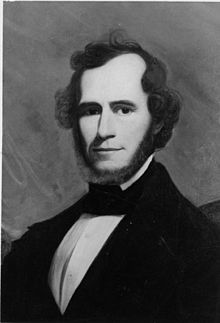Thomas Watkins Ligon
Thomas Watkins Ligon | |
|---|---|
 | |
| 30th Governor of Maryland | |
| In office January 11, 1854 – January 13, 1858 | |
| Preceded by | Enoch Louis Lowe |
| Succeeded by | Thomas H. Hicks |
| Member of the U.S. House of Representatives from Maryland's 3rd district | |
| In office March 4, 1845 – March 3, 1849 | |
| Preceded by | John Wethered |
| Succeeded by | Edward Hammond |
| Member of the Maryland House of Delegates | |
| In office 1843–1845 | |
| Personal details | |
| Born | May 10, 1810 Farmville, Virginia, US |
| Died | January 12, 1881 (aged 70) Howard County, Maryland, US |
| Political party | Democratic |
| Spouse | Sally Ann Dorsey (m. 1840, her death) Mary Tolly Dorsey (m. 1840–1881, (his death) |
| Alma mater | Hampden–Sydney College University of Virginia Yale Law School |
Thomas Watkins Ligon (May 10, 1810 – January 12, 1881), a
Biography
Thomas Watkins Ligon was born on May 10, 1810, near
In 1843, he was elected to a seat in the Maryland House of Delegates from Howard County and in 1845, the Democrats nominated him for Congress. He defeated the incumbent John Wethered by a majority of about 1,000 votes, and was re-elected by a larger margin in 1847. He served in the Twenty-Ninth and Thirtieth Congresses, taking his seat on December 1, 1845 and retiring on March 3, 1849.[1]
In the gubernatorial election of 1853, the Whigs nominated
On January 13, 1858, following the election of his 'Know-Nothing' successor Thomas Holliday Hicks, Ligon retired to his Howard County estate 'Chatham' near Ellicott City. He died at his home on January 12, 1881, and was buried in the family cemetery.
Legacy
Ligon Road in the Ellicott City neighborhood of Dunloggin presumably bears his name. He once resided in the Brick House on the Pike, listed on the National Register of Historic Places in 1996.[2] He also resided at White Hall, listed on the National Register of Historic Places in 1977.[2]
References
- ^ OCLC 144620, retrieved 2011-04-28
- ^ a b "National Register Information System". National Register of Historic Places. National Park Service. April 15, 2008.
